The History Behind Disney Princesses
Disney princess movies have been a part of childhood since their emergence in 1937. Disney has become a well-integrated part of modern society because of their success in turning fairy tales into child friendly adventures. Disney used original fairy tales from around the world to create their Disney Princess movie franchise. Each Princess has their own hidden history, a storyline unexplored within their Disney film, that shows a more adult oriented story. In this article the first four Princesses’ (Snow White, Cinderella, Aurora, and Ariel) original stories and history will be explored in contrast to their movie counterparts.
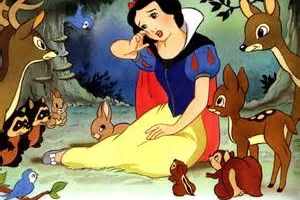
Snow White
Snow White is the first Disney princess. Her film Snow White and the Seven Dwarfs was released in 1937 and was the first of its kind. The story of Snow White was first published in Germany by the Brothers Grimm, in 1812, in their book Grimm’s Fairy Tales. The title for Snow White in Germany was Sneewittchen. However, the Brothers Grimm were not the original authors of the tale. Two sisters Jeannette and Amalie Hassenpflug orated the story in the town of Cassel to them. The story was well known orally before then. The story appears in Ireland, England, Asia Minor and Central Africa to name a few. There are many other tales from across the world that mirror Snow White with similarities including The Beautiful Daughter (West Africa), Cymbeline (play by Shakespeare in England), Fatimé (Albania), The Favored Daughter (Gabon), and The Innkeeper (Portugal) to name just a few.
The movie Snow White and the Seven Dwarfs and the original Brothers Grimm tale, have many similarities. Snow White’s father dies not long after his marriage to the Evil Queen. The Evil Queen also sends the Huntsman to kill Snow White and bring back her heart. This gruesome detail remained in the movie. If the movie was rated by the American Movie Association is would no longer get the rating of G and be at least rated PG.
However, the differences begin after Snow White runs after being told to by the Huntsman. In Grimms’ story the wicked Queen tries more than once to kill Snow White. The Queen ventures into the forest and to the cottage dressed as an old woman. She persuades Snow White to let her in and buy laces (a corset). The old woman kindly offers to lace the corset on Snow White. Snow White thinking nothing of the kindess allows the old woman. The Queen who sees her dream in sight, laces her so tightly cutting off Snow White’s oxygen. She happily returns to her castle believing Snow White is dead. She asks the mirror who the fairest is only to find out that Snow White still lives. The dwarfs had returned home and cut Snow White free of the laces saving her.
Again the evil Queen ventured over the seven hills to Snow White and this time took a poisonous comb with her. She again persuades Snow White to let her in, buy the comb, and allow her to comb Snow White’s hair. Again the Queen leaves believing she is dead but the dwarfs save her once again.
Only the third time does the Queen succeed with the poisonous apple that has been made popular in the movie. The bite of the apple seemingly kills Snow White leading the dwarfs to place her in a glass coffin just like both the story and movie. The Dwarves watch over the coffin when a Prince comes from another land. Again the movie and story differ. The Prince asks for the coffin to bring home stricken by Snow White’s beauty. The dwarfs eventually consent and while the Prince’s servants carry the coffin off they trip over a stump. This shakes loose the lodged poisonous apple waking her.
Snow White marries the Prince and the Queen comes to the wedding after finding out from the mirror she is no longer the fairest. She is forced to wear red-hot iron shoes and dance in them until she cannot dance any more but she falls down dead instead.
The movie and the tale follow closer to one another than some other Disney Princess. It is no wonder why the ending of the tale with the Queen’s death is taken out. It would not be suitable for children. The original story is fantastical in the three near death experiences for Snow White and her quick marriage to a Prince after being taken home as decoration. The story is laced with many impossible magical occurrences but like all fairy tales the moral that cautions against vanity and jealously is seen.
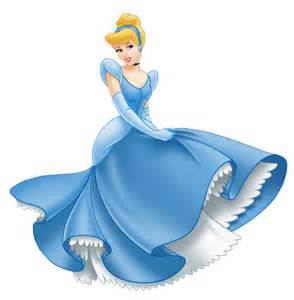
Cinderella
Cinderella is a classic tale that has survived centuries. It is estimated that there are at least 345 different Cinderella stories, but more than likely there are over 1,500. The story of Cinderella that most people are familiar with is probably Charles Perrault’s version in Histoires ou contes du temps passé, which was written in 1697. However, the most commonly accepted first telling of Cinderella is called Rhodopis which originated in Egypt. The story of Cinderella was first recorded in the century BC/AD by Greek historian Strabo. The story is supposedly loosely based on a real person who lived approximately 500 years before Strabo and was written about by Herodotes. The story of Cinderella was not restricted to Europe. The story was also written in 856-860 AD in China known as Yeh-Shen and Shen Hsien. The story encompasses both European and Asian history, and despite differences in details, Cinderella’s core remains.
The Disney movie Cinderella and the two most common stories of Cinderella have notable differences. Charles Perrault’s tale like the movie shows the death of Cinderella’s mother and then her father remarrying another woman with two daughters. Cinderella is tasked with all the chores including those in the kitchen. When the ball is announced Cinderella attends with her fairy grandmother’s help which includes the movies pumpkin turned golden carriage, mice turned horses, and glass slippers with the deadline of midnight. However, unlike the movie the ball is held over more than one night. The second night when she falls in love with the Prince she almost does not leave in time. She drops her iconic glass slipper then. Perrault’s tale ends the same as the movie with the Prince finding Cinderella whose foot perfectly fits the glass slipper.
The most discrepancies lie between the movie and the Grimms Fairy Tale. This story begins the same as both Perrault’s version and the movie. However, the differences begin with the father. He goes to a fair and promises to bring back gifts for his daughters. Cinderella asks for a twig and is given one from a hazel tree. She plants it on her mother’s grave and it grows into a beautiful hazel tree through her tears that water it. White doves are also her form of comfort. This is possibly where Cinderella’s animal friends in the movie were inspired from. When Cinderella asks to go to the ball she is promised she can go if she picks up all the lentil beans the stepmother throws in the fireplace. The doves help her to complete the task. The angry stepmother tells her to do it again but this time throws more beans. Cinderella completes the task again but the stepmother and stepsisters quickly leave her behind. Cinderella’s dress is given to her by the white doves and not a fairy godmother in this tale. She is also not given glass slippers but silk ones. She is given the same deadline as midnight. The Prince falls for her on the first night but she eludes the Prince when she runs away. The second night she comes dressed in a silver dress and glass slippers. She runs away again before the Prince can stop her. The third night of the ball she comes dressed in a gold dress and golden slippers. The Prince expecting her to run away puts pitch on the stairs. This catches her shoe as she runs away.
The Prince then begins the search for Cinderella. Here the story gets more gruesome as the stepsisters try to fool the Prince. The first sister cuts off her toes to fit the shoe but the Prince is alerted to the blood by the white doves looking over Cinderella. He returns and the other sister cuts off her heel to fit. Again the Prince is fooled until alerted to the blood by the doves. He returns and finally tries the shoe on Cinderella rushing her away to marry him. At the wedding the stepsisters are blinded by the doves as punishment. The father figure in this story is also absent but knows of the abuse to his daughter and lets it go on. This controversial father’s role in the abuse is then made more prominent.
It is no wonder why the Disney movie followed Perrault’s more popular and child friendly telling of the story. However, Grimm’s telling stays true to the iconic ‘Rags to Riches’ story everyone seems to love. Cinderella’s goodness is rewarded while her step-sisters’ and step-mother’s abuse and trickery is punished.
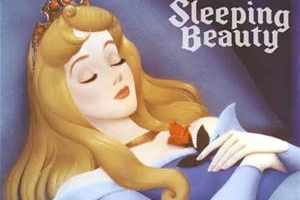
Aurora
The first known story of a Sleeping Beauty figure is back in the 12th century. A Norse saga called Volsunga depicts the story of Odin’s displeasure of the Valkyrie, Brunhilda. He curses her to sleep until a man comes to marry her and is woken by Siegfried who cuts off her arm to awaken her. The story of Sleeping Beauty was later influenced in 1528 by a French Romance called Perceforest. The story was reshaped again in Sun, Moon, and Talia which was written in 1636 by Giambattista Basile. This story follows a married Prince who finds Talia (the Sleeping Beauty figure) and rapes her. He later returns discovering she is woke and has given birth to his twins, Sun and Moon. His wife finds out about his second family and orders the cook to cook the kids. The goodhearted cook feeds the queen a goat instead. One of the most well known scenes from this story occurs when the Queen has him eating the goat thinking it is his children. She tells him, “You are eating your own”. The Prince is then told by the Queen he was eating his children. He then throws his wife in the fire only to later finds out his children are alive. He marries Talia soon afterwards.
Perrault also wrote his own telling of the story in Histories ou Countes du temps passé called La Belle au Bois Dormant. His story mirrors Basile’s before with a few additions. The children are named Aurora and Jour instead of Sun and Moon. The Prince’s wife is replaced by his ogre mother who also tries to kill Sleeping Beauty. The ogre mother is killed by the Prince but instead of being thrown into a fire is thrown into a boiling cauldron.
Following Perrault the Grimm Brothers once again wrote down their own version of the story calling it Briar Rose. The Grimm Brothers’ tale is the tamest of all the other stories and for such is the only used in the movie Sleeping Beauty. Grimms’ fairy tale follows the plot of the movie Sleeping Beauty like all the tales before. However, there are differences. The Maleficent like character is an old fairy that was not invited to the christening of the baby. Her late arrival leads the King to be unable to provide her with a golden plate, fork, spoon, and knife like the other fairies. This angers the old fairy leading to the curse that is placed over the babe. Again like the movie one fairy is left to give her gift after the old fairy. This fairy alters the curse from one that will kill the Princess to one that will put her to sleep for a hundred years where a Prince will wake her. When the Princess is seventeen an old deaf women in the castle who had not heard about the King’s decree to be rid of all spinning wheels, is spinning. The Princess trying to learn is pricked by the spindle and thus the curse begins. The good fairy who altered the curse returns. She puts the castle to sleep excluding the parents. The castle is then over time hidden by wood that is impenetrable. The similarities between the movie and story are easily seen. The Prince does not not rape the Princess but kisses her breaking the spell. This then leads to their wedding and happily ever after. Disney follows this story but respectfully pays Perrault homage by choosing to call Sleeping Beauty, Aurora, one of the twin’s in Perrault’s story.
The story of Sleeping Beauty was not isolated in Europe like many other fairy tales. Some estranged versions can be seen elsewhere. The Ninth Captain’s Tale in 1,001 Arabian Nights is one such example.
Aurora was the third Princess to be officially named as a Disney Princess. The child friendly movie depicted in Disney originated from a dark and unsuitable story for children that has now delighted families.
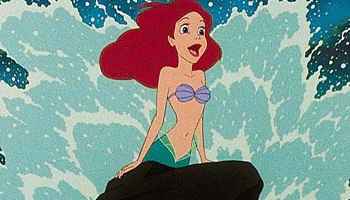
Ariel
The story of The Little Mermaid known as Ariel does not have a known history traveling back as far as other fairy tales. Her story was greatly influenced by Undine by Friedrich de la Motter Fouque in 1811. Undine is the story of a water spirit who wants to gain a human soul. She marries a Knight in order to try and gain one. This idea of gaining a soul through marriage to a human is the same in the original version of The Little Mermaid by Hans Christian Andersen in 1836.
Andersen’s version follows similarly to Undine, the mermaid is told she cannot see the world above until her fifteenth birthday because it custom. One of the movie’s most lingering scenes is when Ariel is on the rocks with water splashing behind her. The original tale has a similar scene. On her fifteenth birthday she lays on rocks looking out on the world above the ocean. The movie and story mirror one another in the shipwreck of the Prince. Ariel saves the Prince and returns to the sea eager to go above and live with him. The story and movie however, differ here. Ariel has a Grandmother for one. Her Grandmother explains that mermaids do not have souls and become sea foam when they die. The little mermaid wants a soul, and is told the only way to gain one is to have a human man love and marry her. She is eventually found by the sea witch who gives her legs and takes her voice like the movie. However, unlike the movie she will not be turned into a snail like creature and instead will be turned to sea foam if not married by the Prince. The Prince never falls in love with her and decides to marry a Princess from another land. The little mermaid’s sisters make a deal for their hair with the sea witch to give the little mermaid back her tail. The result is a dagger that if the little mermaid uses to kill the Prince will give her back her tail. She cannot do it and throws herself off the ship they are on for the Prince’s marriage. As she falls towards the ocean and turning into sea foam the daughters of air catch her. They make her their sister and explain that through her good deeds and love she can now earn her own human soul. She has three hundred years to do good and in return gain a human soul.
The original tale is much more centered over the little mermaid gaining a human soul. She is also not given a name in the story and was only given one by Disney. The story’s ending although light hearted was not deemed appropriate for a G rated audience. It was altered into the form we now know where Ariel marries Prince Eric. The sea witch becomes the Princess from another land that tries to marry the Prince. She is not the villain as depicted in the movie.
Ariel is the fourth official Disney Princess.
The truth behind Disney Princesses and their original stories show a more gruesome and adult centered storyline. Their storylines followed either Perrault’s or Grimms’ fairy tales depending on which was more child friendly. Disney successfully took these adult fairy tales and turned them into childhood memories for many across the world.
What do you think? Leave a comment.
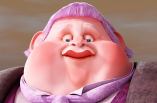
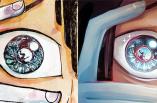
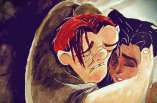
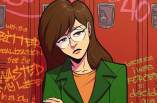
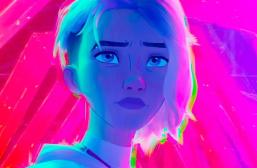
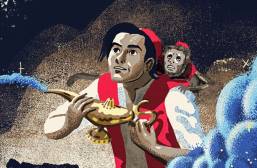
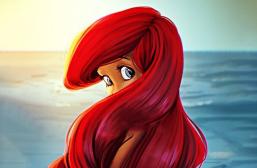
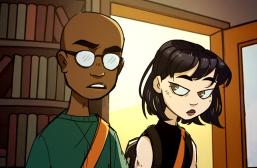
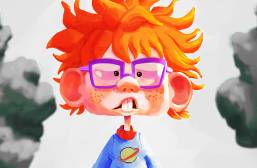
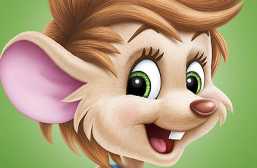
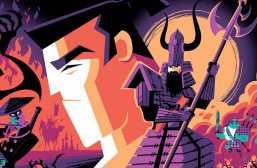
Wow. Thats a lot of interesting information regarding the famous Disney princesses. Vey good article.
Indeed. Great use of detail for this topic.
I like the part where it says they raped Aurora
What.
Not contributing to the conversation much, I know, but is it very wrong that the spelling “dwarfs” unnerves me? I feel like I’m chewing on ice or something to read it. Nothing against the author of this article, obviously. Just a personal bugaboo.
Snow White was the first and is the most true to the original tale. The only things changed was how the witch dies and how many times she tries to kill Snow White
I’ve heard that Snow White was actually 12 years old.
She’s 15 in the original story by Anderson, and 16 in the ,movie.
You did alot of research! Great job.
I really wish that Disney would have been more historically accurate when designing the Disney Princesses. Yeah, I get how they would want Pocahontas to cover her chest, and have Belle look more natural, but still, they could have put a little more effort into their research
Love this article almost as much as I love Disney. Thank you for writing this. It is very obvious that you did your research!
Great research and even better article! I love all of these princesses, but Snow White is the most interesting.
In an incredibly depressing way most of these stories morals are to settle for what you have and the class of society you are born into. If not that, then to take out the most cruelest revenge you can on your tormentors(snow white’s case. also cinderella.)
What funny is that if you fallow the movies and compare them to when they came out you see that they straw farther and farther from the original as time goes on.
Fantastic article! You clearly did a ton of research; I wish we could see at least a Works Cited list, if not actual footnotes. This is so good it makes me want more. 🙂
The number three shows up a lot in fairy tales, and there’s a belief that if a fae/fairy says something three times it has to be true. There’s also a rule in story-telling that audiences don’t really want to sit through a long list, so if you want to imply “a lot” without boring everyone, you have the characters succeed on the third attempt. (Very commonly done when someone’s guessing a password.)Sometimes there’s an implication that a great number of other efforts have been made (montage!) but all the audience needs is three to recognize and label a “sequence”. Knowing that rule, I wonder how much of the fairy tale rule-of-three is the result of the original oral tale-tellers intuitively understanding their audiences’ patience.
I am glad they cut the Snow White sequence down to just the apple in the movie. Otherwise she’s a really dim girl, buying poisoned merchandise from the same old woman over and over and over…
I cried when I read the end of the story “the little mermaid”
That Snow white was gorgeous! Loved the dress
Lots of details here! Good work.
This article is very interesting. I was intrigued the moment I saw the title. I was not familiar in how many different types of Disney princess fairytales there were! My favorite to read about was Cinderella because I did not know that her step sisters cut off their toes/heel just to fit into the slipper. I saw the play “Into the Woods” and noticed that the step sisters did the same act, but I had assumed that the playwright created his own version of the story. I enjoyed reading this article! Very well done.
This was an interesting read and one that I feel was informative to the reader. Good job!
Cool article!
I always wondered where they got the names from.
I would like to see a similar topic such as this expanded on, but instead focus on the looks of the princesses. I always thought it was interesting how Disney changed or made princesses look “colonized” — for example, Pocahontas isn’t native american — she’s a hybrid of races.
Loved this article!! Well-re,,written and researched! Sleeping beauty’s story is so dark, but I loved your Little Mermaid section! Nice work 🙂
I loved the article! I think that looking at the influencing origin stories for the Disney Princesses is really interesting. Looking at varying versions of the same story is always intriguing and surprising. Great Job!
Very interesting how Disney takes tales from other cultures and passes of as original idead…pathetic…
The original stories for these fairy tales are much more gruesome, which I had no idea about. I grew up with all these princesses, admittedly never wishing to become a fairy princess myself. I find it very interesting that these stories date to way back, I think like most people, I just thought they were created by Walt Disney himself. It’s nice that these movies come from stories all over the world. Not really having a favourite princess, I enjoyed watching these movies over and over again. My Disney collection on VHS was insane, and just trying to pick one to watch was an ordeal in itself, just like Netflix today lol.
An interesting read. Thank you.
This is an incredibly interesting read! Being a huge fan of not only the original stories but also the Disney moves, this article gives me a good picture of how the stories were recreated and reconstructed from the Grimm tales.
I am a fan of disney and always will be. Fascinating read, you put a lot of work into this and it paid off.
This article was very interesting because I took a children’s literature class and we learned a lot about how fairy tales usually start out being gruesome and more appropriate for adults than children. We focused more on novels than fairy tales so it was very interesting learning about the original Disney princess’s and how they toned down the violence in order to make it more child friendly.
Great article. I was really surprised by what really happened in the original tale of Snow White! It is very different from the disney classic, but I do believe that the movie spin on things was actually an improvement.
I always wonder why people want films based off of the tales to be dark like the original stories when they’re really dated and just used as cautionary tales for society back then. At least Disney knew to try and make them appealing to all ages in an attempt to be timeless, and it shows too. Great article!
This article was wonderfully written and packed with detail that enhanced the content. I would have loved to learn about the other princesses.
This is a great read! While most people can easily claim, “Yeah, I know that all the Disney princesses were originally fairytales” not many (if any) can reference these kinds of details. Bravo! Your article sparks a lot of questions though: Why are we so sanitary with our children today? When did that change happen? What lessons is Disney trying to teach us with their version of the fairytales? What is it about these fairytales that continue to make them relevant?
This is great. I’ve always been a Disney freak, as well as a fairy tale freak, and I like seeing the history of these common characters.
I’ve researched the origins of these stories quite a few times and I still learned something new from this article! The more you know
This is great and very informative! I learned a lot of new things.
wow i love the little mermaid and never knew this stuff
Great… thanks for share a deep detail